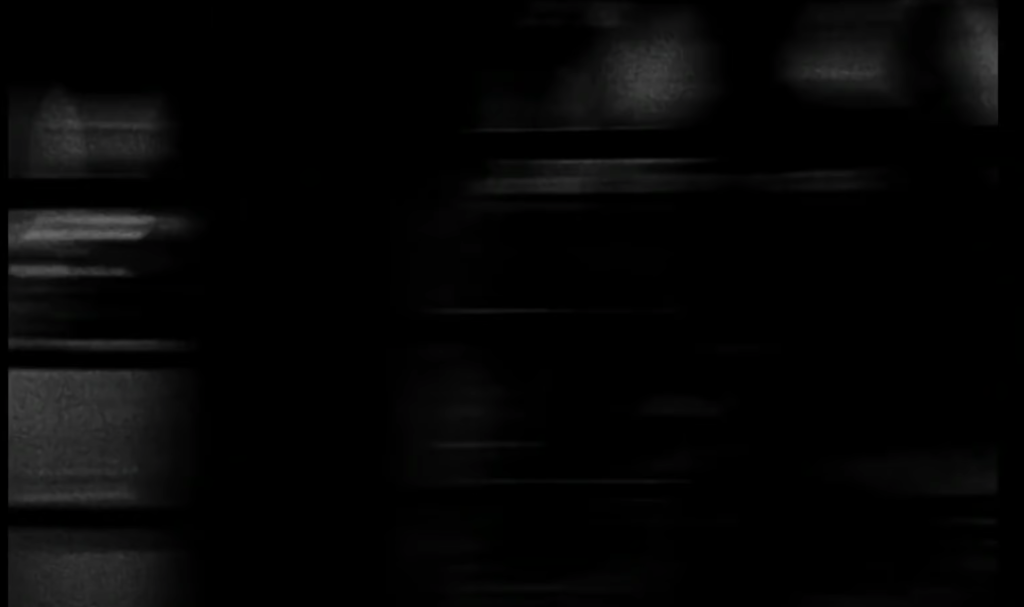https://web.microsoftstream.com/video/ad7d9f6b-7dfe-4f79-bc2f-fd28ea7cbdae
Monthly Archives: February 2023
Filters
Citizen Kane Project – “You’re Fired!”
Citizen Kane written task 1
The production of Citizen Kane was all up to Orson Welles as the studio allowed him to have full creative control over his production and allowed him to hire whoever he wanted. Welle’s took this to his advantage and decided to hire many of the people he used to work with in theatre as well as hiring some of the best technicians in Hollywood at the time. This was all agreed with the studio RKO as long as Welle’s did not exceed a $500,000 budget, this was a part of RKO’s strategy to attract new talent to the company as well as to increase artistic freedom within the film industry.
citizen kane practical task
Choose your favourite scene from the film and explain why this is the case. (You should consider Welles’ use of micro elements in your answer)
My favourite scene in Citizen Kane is when Getty blackmails Kane due to his affair with Susan, this is due to the clever use of lighting that helps set the scene and tell the story.
The scene begins with Kane and Susan centred in the background of the frame with Getty and Mrs Kane either side of him in the foreground. Shadows are casted over Kanes face hiding his expressions and symbolically taking his power from the situation, by putting him in the dark.
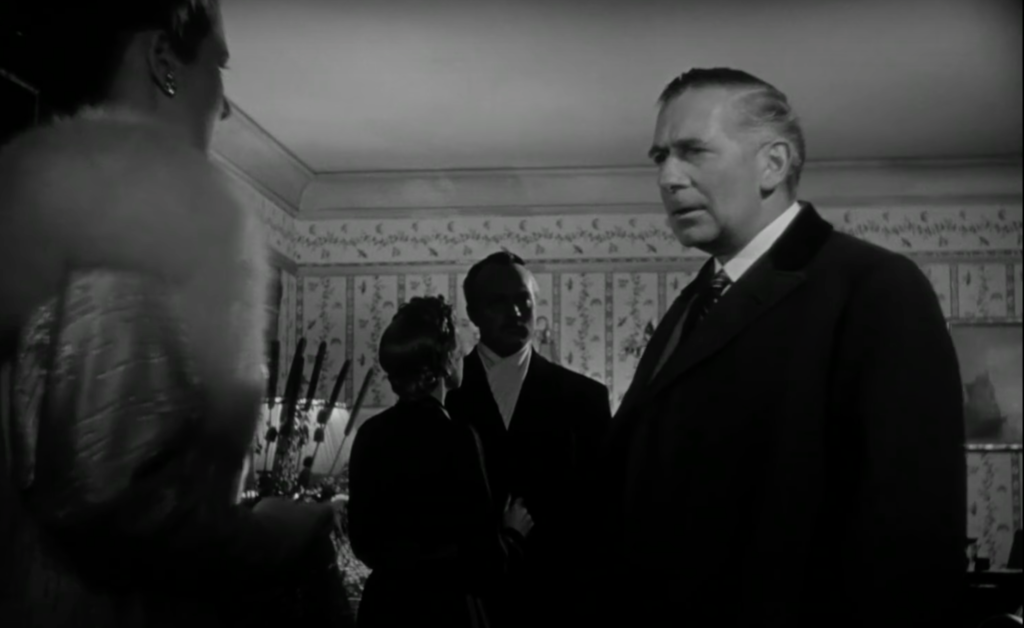
As Susan emerges from the shadow to her own defence, the blocking of the scene begins to resemble an earlier flashback of Kane’s childhood when his parents are deciding to send him away, Kane is shunned to the back with no power over decisions made about his life. The scenes are portraying the same message and so Welles blocks the scenes similarly to demonstrate this.
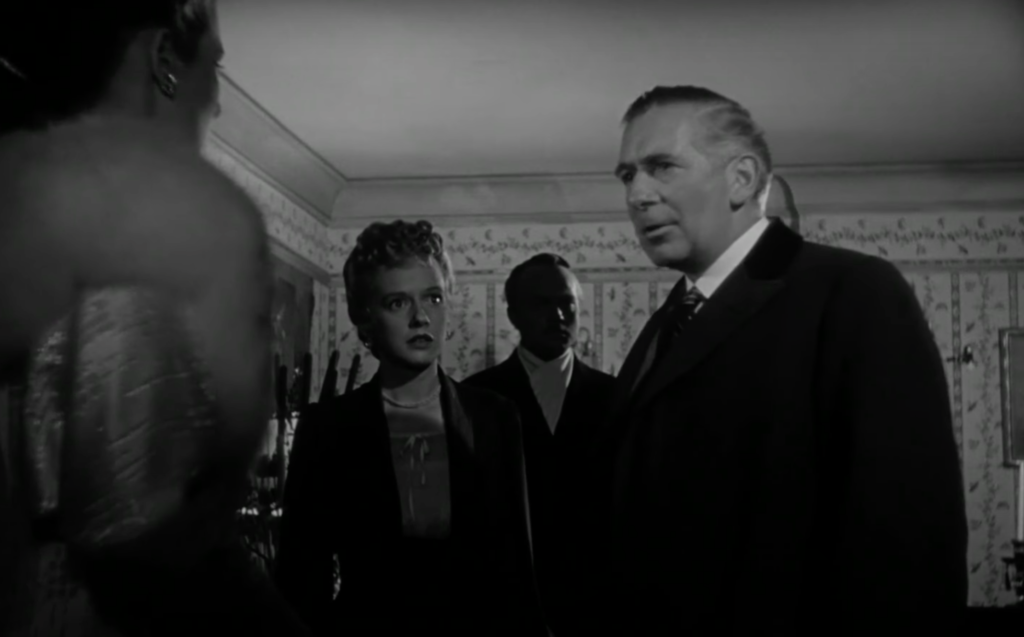

The costume choice for Mrs Kane also signifies a lot for the scene as it makes her stand out when between Getty and Kane even when Kane is towering above her, she still stands out due to her bright dress.

At one point in the scene, Mrs Kane turns to leave the room, a half shadow is then casted across her face with the key light shining from the left. The lighting here portrays her conflicted feelings towards Kane and how she feels hurt by him but still wants to appear strong.
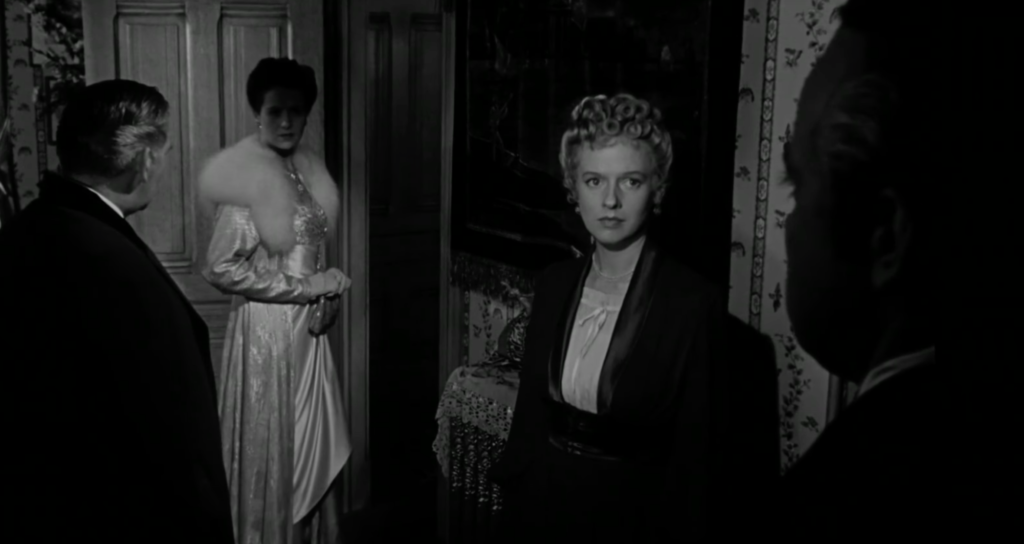
Kane then completely comes out of the shadow and is fully lit in the centre foreground, filmed from a slight low angle making Kane appear taller than the people around him, showing his rise to power and how he no longer will let people make decisions for him.

Finally, I really enjoy how the scene has long takes before it cuts to a different shot and that it isn’t choppy. The scene flows well at a good conversational pace, and this helps in understanding what is being spoken about and the events happening in the scene.
Why, in your view do you think Citizen Kane is regularly cited by critics as “the greatest movie ever made”?
Citizen Kane was created at the peak of the film industry in Hollywood and still to this day has an influence on modern day film making. The film noir genre stemmed from Citizen Kane and its techniques, and the genre went on to become one of the most popular of that era; and even now samples of it are used in contemporary work. From this point alone it is safe to say that critics are correct to cite Citizen Kane as one of “the greatest movies ever made”, especially on an influential basis.

Orson Welles was a young director coming from the theatre world, who adapted with the times to make something for a new audience in a new style of media, and what he created was ultimately ahead of its time which is why it is still enjoyed by many people, as it is rather timeless. He experimented with extreme camera angles, obscure lighting, a new type of focus (deep focus) and brought elaborate blocking from the theatre stage onto a cinema screen. He developed new ways of storytelling and added layers and dimensions to his characters and plots which was a new concept at the time, when movies often merely used the camera as an observer, Citizen Kane introduced the ‘unreliable narrator’ into cinema by switching between contradicting accounts of Kane’s life through flashbacks.

Orson Welles was not conventional; I believe this was a huge strength for him and his film making as it was impactful in a way that no one else had tried to be before. Citizen Kane’s opening squashed any tension straight away by telling audiences the whole story right in the beginning, which at the time would have completely upturned people’s expectations. Films back then (and sometimes still nowadays) often flow in a linear sequence with events being shown in chronological order. Welles bent the rules of film making in Citizen Kane and in doing so, made his work even more entertaining and pleasurable to watch. On a technical level, and simply just the feel and look of the film, it continues to impress audiences. Therefore, this is why I believed critics still to this day cite Citizen Kane as “the greatest movie ever made”.

Explain how the production context of Citizen Kane influenced the “look and feel” of the end product
Hollywood in the 1940s is classed as the Golden Age of Film. Coming off the back of the Great Depression and with a Second World War looming in the near future, there was an unprecedented wave of production and film noir was becoming the popular genre of the time. The dark and cynical aspect of film noir reflected the way the world and America felt at the time. Citizen Kane is said to be the most iconic film to come out of this era and ultimately the inventor of the film noir genre as films that follow in its footsteps tend to adopt many of Orson Welles’ lighting, editing and cinematography techniques.
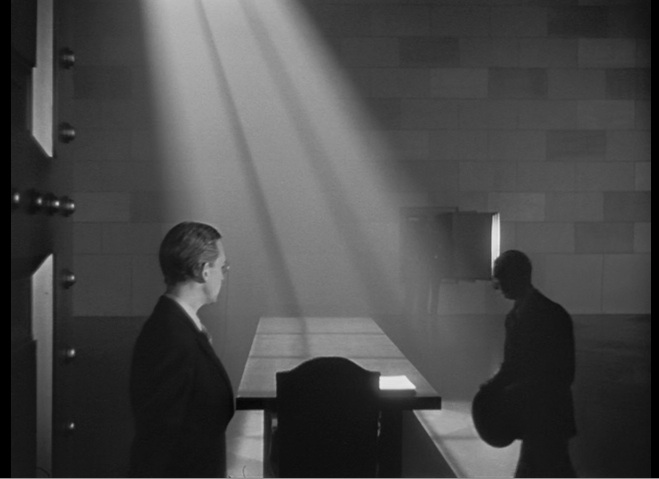
Elements such as deep focus, light spill, backlighting and chiaroscuro lighting are only some of many key features of Welles’ debut film. The lighting specifically influences the feel of the film and helps guide the story of Charles Kane and his downfall, it creates feelings of conflict and confusion and demonstrates power while the shadows also created a dark and mysterious atmosphere. All done by showing and not telling. Deep focus was a new technique used by Welles, allowing subjects that are far away in the background still be in focus, this adds to the storytelling as the audience can literally see more of the details that Welles wants them to see. Orson Welles took film making to a new level for Hollywood in the 1940s and used the events of the time period to create a genre of film that could resonate with the world.

You’re Fired Movie
Task 3- Why, in your view do you think Citizen Kane is regularly cited by critics as “the greatest movie ever made”? (300 words min)
Citizen Kane introduced many avant-garde (innovative) storytelling/cinematography techniques into Hollywood, with Welles leaving a huge influence on the film noir style. He used artful lighting, cinematography, and unorthodox narrative structure told through different perspectives etc.
Firstly, the film takes on a non-linear structure, with the film famously beginning with the death of the main character and the introduction of the mysterious “rosebud”. The use of inter-view style recollections from different perspectives enhances narrative complexity whilst also adding an alternate perspective depending on how the character knew Kane meaning we can perceive him through many different lenses, without knowing how reliable each one is, resulting in an unclear sense of who Kane really was.

Moreover, Welles and his cinematographer Gregg Toland pushed the conventions of film making, introducing techniques that are still prominent in the film industry today; one of their most influential being their use of deep focus. Deep focus allowed for some amazing shots and effects regarding long shots and status staging. For example, in the scene below Kane seems to be engulfed by his surroundings suggesting his inferiority compared to the others in the scene.
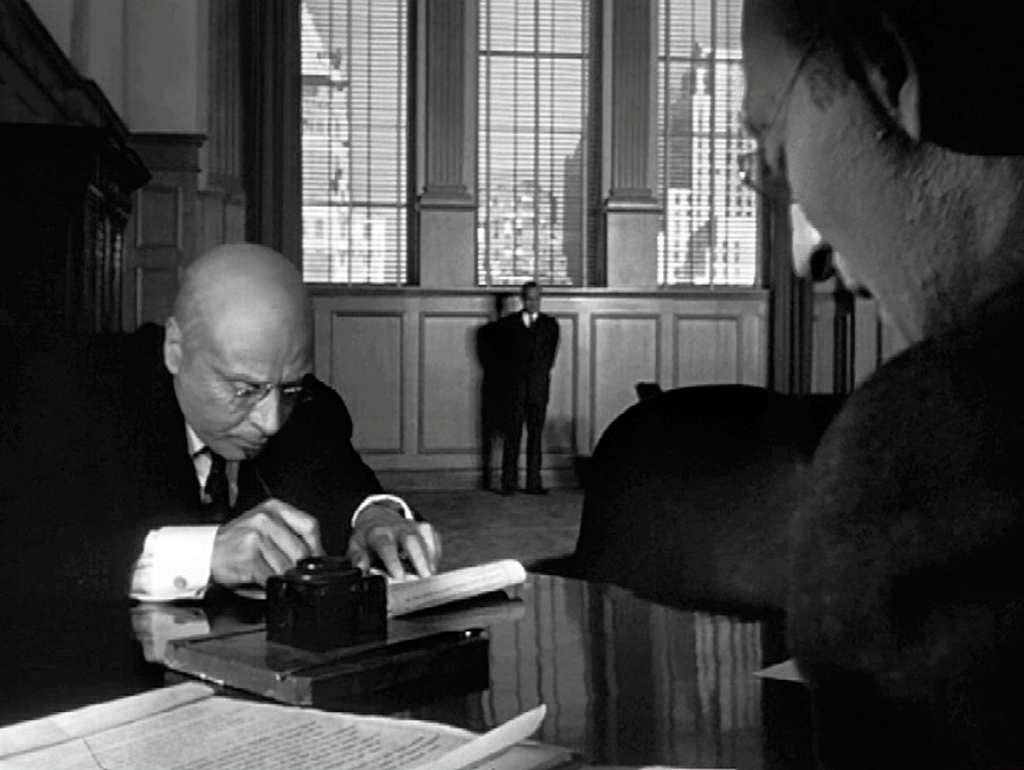
One particularly impactful shot is when Kane is walking down the hallway and his reflection is fragmented through the mirror perhaps suggesting he has lost his sense of self since his wife left him, or his isolation and the fact he’s left to himself.

Additionally, Welles experiments with lighting, with the whole film being in black and white, lighting/chiaroscuro, dark vs light, plays a big part in both the impact of the shot and the narrative itself. Welles masterfully uses light and shadow to convey characters internal emotions and turmoil. He desires, as a director, to connect and communicate with the audience through his images and the use of shadows aid him to do this. For example, as Kane signs the paper he’s engulfed in darkness perhaps foreshadowing his poor morals/greed. Thes lighting techniques went on to influence film noir.

His masterful use of extreme low and high angle shots is another reason why it may be held so high by critics. The low angle shots emphasise a character’s dominance, specifically in the below shot where Kane is shown at a particularly low angle highlighting his power/narcissism. Whilst high angled shots dwarf the subject, belittling them for example, as Kane stands on the newspapers. These shots were uncommon during this period.


Ultimately, I think the reason it’s considered “the greatest movie ever made” is due to its unique and innovate cinematography techniques that helped film/cinematography advance.
Task 2- Choose your favourite scene from the film and explain why this is the case. Consider Welles’ use of micro elements in your answer. (200 words min)
Citizen Kane – A Marriage Just Like Any Other Scene (4/10) | Movieclips
This is my favourite scene as it highlights Kanes deteriorating marriage over the course of years through the use of editing techniques, lighting, positioning/mise en scene and music/sound.
The scene opens with a dolly shot moving towards the two sitting closely suggesting intimacy between the pair as it positions the audience to view them as deeply in love however, throughout this scene the underscore of waltz music gradually builds in tension to emphasise the downward trajectory of the marriage and paired with the mise en scene it beautifully highlights the fact it’s gradually disintegrating. For instance, the table seems to function as a symbol of distance and how Kane and Emily have grown apart both physically and emotionally as the scene descents into silence between the pair. The scene is almost cyclical as it’s a backwards dolly shot, a reverse of the opening, but the lighting here is much darker compared to the initial shot suggesting their marriage can’t be revived and has ended/is ending.

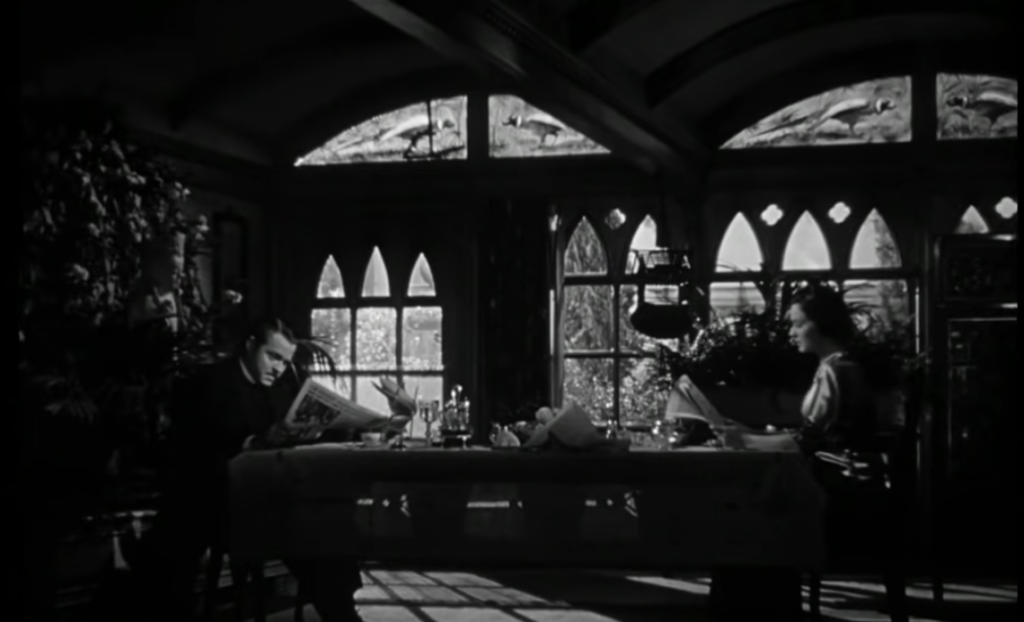
As the table grows longer the scene also begins to separate in two shown by shot reverse shot editing between them as they become isolated from one another in their own frames oppose to the beginning where they shared a frame.

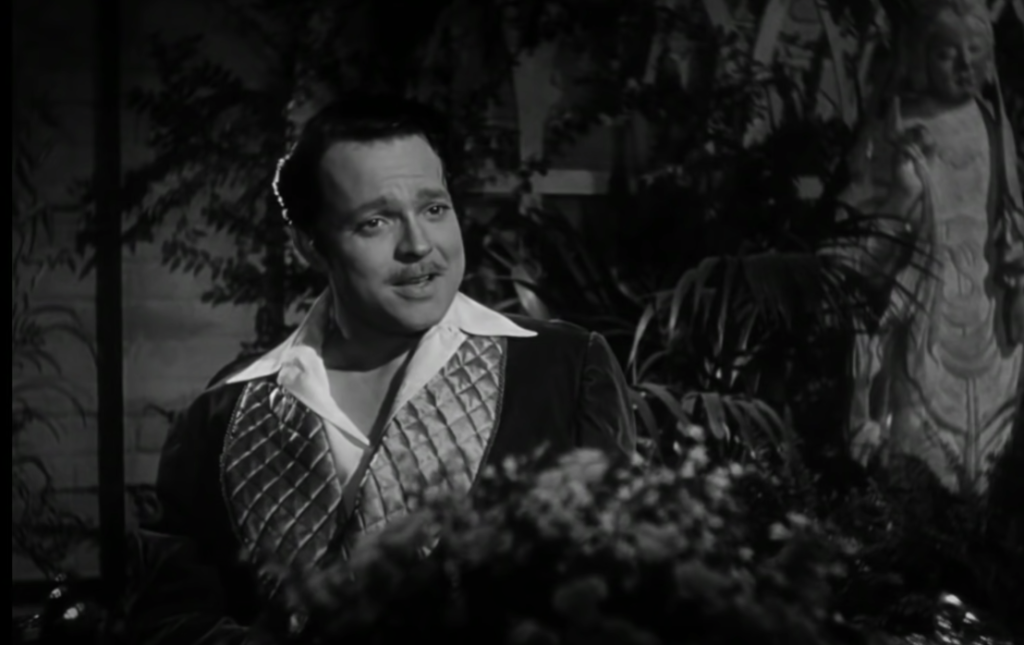
Props are also added in the foreground between them perhaps acting as a barrier to further separate them.
Montage editing is effective in this scene as it allows Welles to manipulate time for the benefit of the audience whilst still seeing the couple in the same setting. This is done by using a fast, spinning blur of the windows to transition through time, whilst suggesting nothing monumental has occurred.
